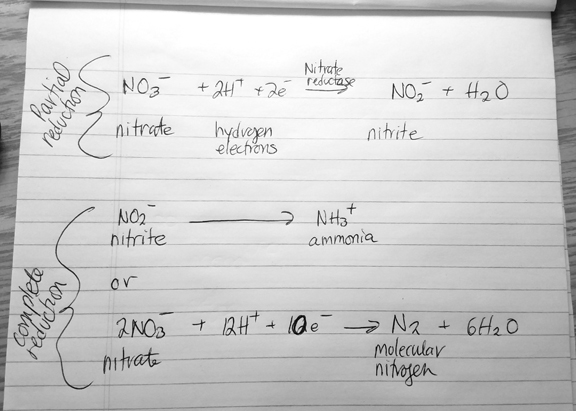Nitrate reduction is an anearobic process and can occur with some aerobes and facultative anaerobes. Anaerobic respiration (an oxidative process) uses nitrates (NO3-) or sulfates (SO4-2) as an oxygen resource, because oxygen is the final electron acceptor.
A nitrate broth (standard broth medium with 0.1% potassium nitrate) with 0.1% agar (makes the medium a semisolid promoting an anaerobic environment due to lack of free gas exchange) is inoculated and incubated for 12-48 hours (this test must be done in this time window).
Five drops of reagent A (sulfanilic acid) is added followed by five drops of reagent B (alpha-naphthylamine). A cherry red color change indicates a positive result (the organism can metabolize nitrates).
Other possible situations may be:
A. If there’s no color change after the additions of reagents A and B, the organism was not able to reduce the nitrates. To test this possibility, add a small amount of zinc powder to the test tube (which already has reagents A and B). If nitrates exist, the zinc will reduce the nitrates to nitrites and the medium will turn into a cherry red color (positive test indicates that the organism was not able to metabolize nitrates). IF upon the addition of zinc there was NO color change…then you have situation B (see below).
B. If there’s no apparent color change, the organism may have metabolized and broken down the nitrates (to ammonia or molecular nitrogen) too quickly for testing. This is why it is a good idea to inoculate a few test tubes, and to perform this test at the 12-hour mark and 48-hour mark.
Clinical significance. A patient with tuberculosis-like symptoms should provide a sputum sample in order to check for Mycobacterium tuberculosis. M. tuberculosis is the only Mycobacterium species with the ability to metabolize nitrates.
Reference
Cappuccino, J. G., & Welsh, C. (2018). Microbiology: A laboratory manual.

